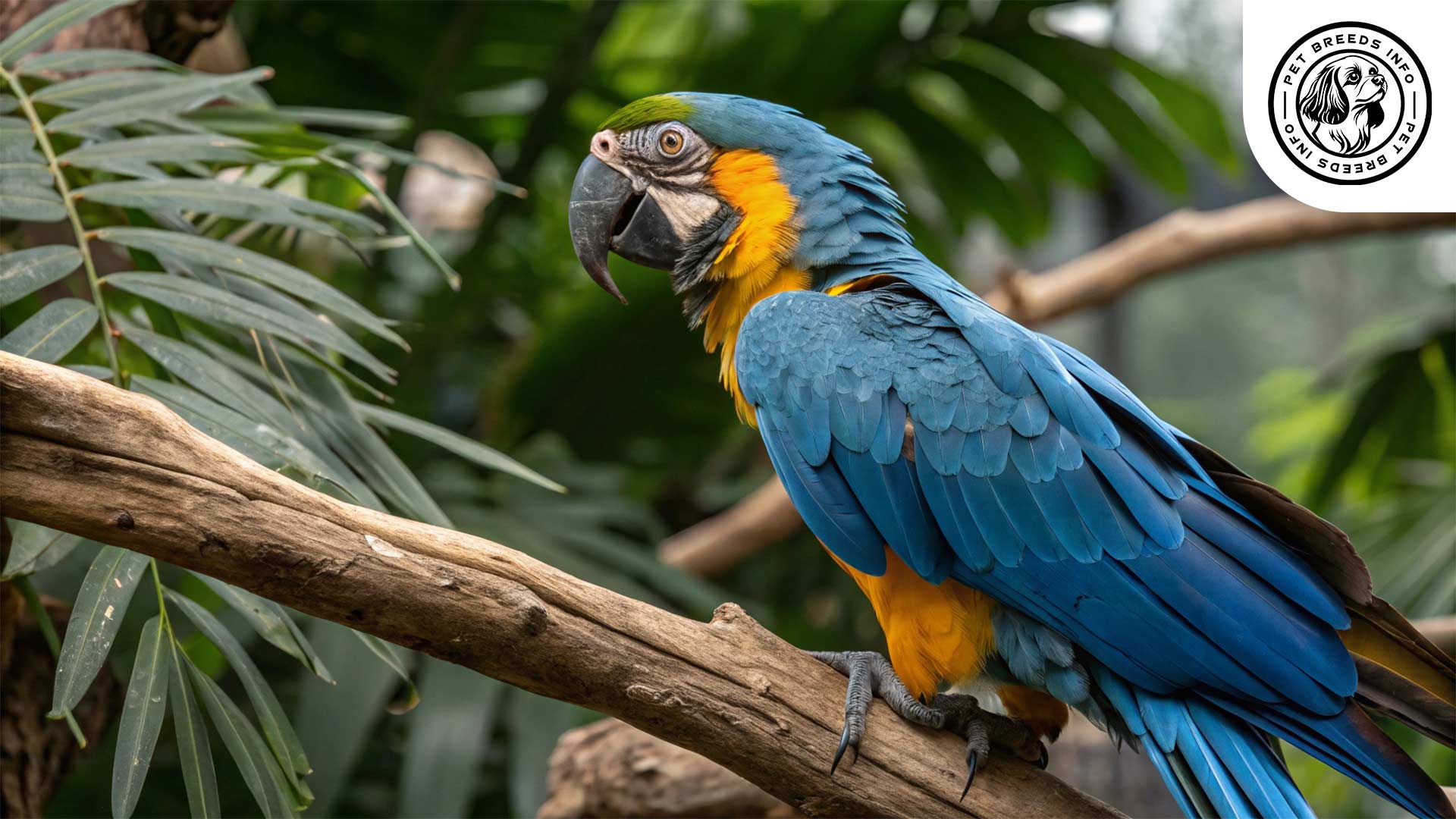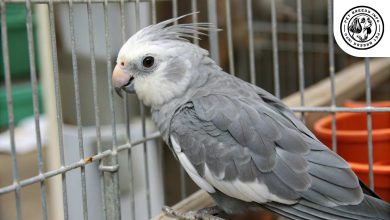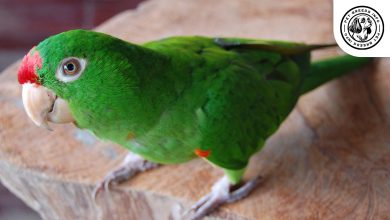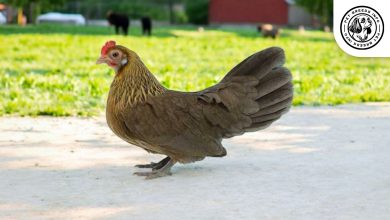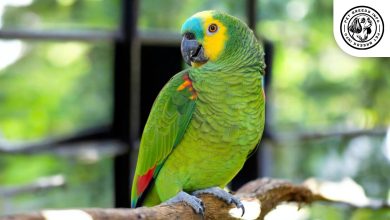Blue-throated Macaw Bird: Personality, Lifespan, Food & Care
General Introduction of the Breed
The Blue-throated Macaw (Ara glaucogularis), also known as the Caninde Macaw or Wagler’s Macaw, is a rare and striking parrot species native to Bolivia. This bird is primarily found in the Beni Department, where it inhabits tropical savannas and palm forests. Once widespread, its population has declined significantly due to habitat loss and illegal pet trade.
Table of Contents
| Common Name | Blue-throated Macaw |
| Scientific Name | Ara glaucogularis |
| Origin | Bolivia (Beni Department) |
| Size | Medium-large; around 33 inches (85 cm), 900–1,100 g |
| Lifespan | 50–80 years |
| Colors | Turquoise-blue upperparts, yellow underparts, blue throat, grey beak |
| Talking Ability | High—can mimic words and learn tricks |
| Noise Level | Moderate to high—can be loud without proper training |
| Social Behavior | Affectionate, intelligent, forms strong bonds |
Physical Characteristics
The Blue-throated Macaw is a medium-large parrot with a body length of about 85 cm (33 inches) and an average weight of 900–1,100 grams (2–2.4 lbs). It has vibrant turquoise-blue upperparts and bright yellow underparts, with a distinctive blue patch on its throat. Its face has bare white skin with black feather lines. The bird’s eyes are dark brown, and its strong beak is dark grey. It has a long, pointed tail, adding to its majestic appearance.

Personality and Temperament
The Blue-throated Macaw is highly intelligent and capable of learning tricks and commands quickly. It is an active and playful bird that requires mental and physical stimulation. This macaw forms strong bonds with its owners and can be very affectionate. It enjoys social interaction and thrives in a household where it receives ample attention. While generally friendly, early socialization is important to prevent skittish behavior. Due to its sensitivity, sudden environmental changes or stress may affect its well-being.
Care and Maintenance Requirements
The Blue-throated Macaw needs a spacious environment with plenty of room to fly and climb. A large aviary or a well-structured indoor setup with regular free-flying opportunities is ideal. Daily play and exercise are crucial for maintaining its physical health and preventing boredom. Grooming involves regular beak and nail trimming, along with occasional bathing or misting to keep its feathers clean and healthy. This bird is sensitive to extreme temperatures, so it should be kept in a stable, temperate climate.
Read More: Blue-headed Pionus Bird
Diet and Nutrition
A well-balanced diet for the Blue-throated Macaw includes high-quality pellets, fresh fruits, vegetables, and nuts. It particularly enjoys palm fruits, which are a staple in its natural habitat. Foods to avoid include chocolate, avocado, caffeine, alcohol, and excessively salty or sugary items. A well-portioned diet with controlled servings ensures optimal health, with two main meals per day being a suitable feeding routine.

Health and Common Medical Issues
The Blue-throated Macaw is prone to common parrot health issues such as feather plucking, respiratory infections, and Psittacine Beak and Feather Disease (PBFD). Regular veterinary check-ups and a clean living environment help prevent illnesses. With proper care, this macaw can live for 50–80 years, making it a long-term commitment for owners. Vaccinations and regular health screenings are recommended to detect early signs of disease.
Training and Behavior Management
This breed is highly trainable and responds well to positive reinforcement methods such as treats and verbal praise. Early training and socialization help prevent behavioral issues like excessive screaming or aggression. Establishing a consistent training routine and providing interactive toys can help keep the macaw engaged. Proper guidance ensures that it develops into a well-mannered, affectionate companion.
Read More: Ixworth Chicken
Interaction with Other Animals and Humans
The Blue-throated Macaw bonds closely with its human caregivers and enjoys companionship. It can be friendly toward children but requires supervision due to its strong beak. This species generally coexists peacefully with other birds if introduced properly, though individual personality traits vary. Due to their social nature, they thrive in environments with attentive owners rather than being left alone for prolonged periods.

Price and Availability
Due to its rarity and endangered status, the Blue-throated Macaw is difficult to find in the pet trade. Prices can range from $10,000 to $15,000 or more, depending on the breeder and legality of acquisition. Ethical considerations should be taken into account when acquiring one, ensuring the bird is sourced through legal and responsible breeding programs. Prospective owners should verify that they are purchasing from reputable breeders who follow legal conservation guidelines.
Conclusion and Final Thoughts
The Blue-throated Macaw is a remarkable and intelligent bird best suited for experienced parrot owners. It requires a high level of care, social interaction, and a spacious environment to thrive. Due to its endangered status, conservation efforts are crucial in protecting its wild populations. Prospective owners should fully understand the responsibilities involved before bringing this beautiful but demanding bird into their lives.
Read More: Java Finch (Java Sparrow) Bird
FAQ
Is the Blue-throated Macaw endangered?
Yes, it is critically endangered due to habitat loss and illegal pet trade, making conservation efforts vital.
What kind of environment does it need?
A large aviary or spacious cage with room for climbing and flying, plus regular out-of-cage time for exercise.
Can it talk or mimic human speech?
Yes, this macaw is intelligent and capable of mimicking words and learning tricks through positive reinforcement.
Is it good for families with children?
It can be, with supervision. Its strong beak requires cautious handling around small children.
